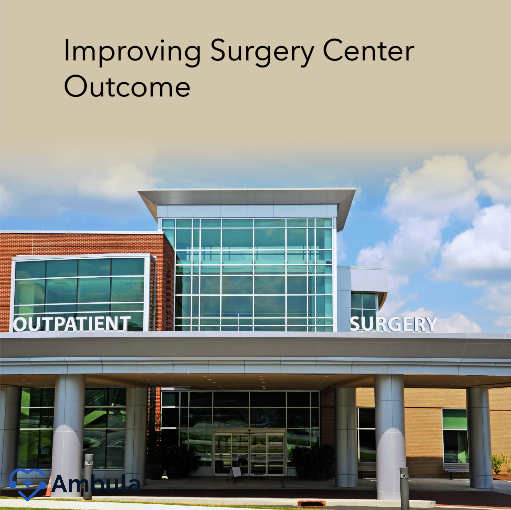Introduction
What is a surgery center?
A surgery center is a healthcare facility that performs outpatient surgeries. Outpatient surgeries are procedures that do not require an overnight hospital stay. Surgery centers are typically smaller and more specialized than hospitals, which allows them to focus on providing high-quality care at a lower cost.
Why is it important to improve surgery center outcomes?
Improving surgery center outcomes is important for several reasons. First, it can help to improve patient safety. Surgery centers have lower rates of infection and other complications than hospitals. Second, improving surgery center outcomes can help to improve the quality of care that patients receive. Surgery centers are often able to provide more personalized care than hospitals. Third, improving surgery center outcomes can help to reduce the cost of healthcare. Surgery centers are typically less expensive than hospitals.
What are the benefits of improving surgery center outcomes?
There are many benefits to improving surgery center outcomes. For patients, the benefits include improved safety, better quality of care, and reduced costs. For surgery centers, the benefits include improved reputation, increased patient satisfaction, and reduced liability risk.
Here are some specific statistics on the benefits of improving surgery center outcomes:
- Surgery centers have lower rates of infection than hospitals. A study published in Surgery found that the infection rate for ambulatory surgery centers was 1.2%, compared to 4.5% for hospitals.
- Surgery centers have lower rates of other complications than hospitals. A study published in the journal JAMA Surgery found that the complication rate for ambulatory surgery centers was 2.8%, compared to 6.6% for hospitals.
- Surgery centers are less expensive than hospitals. A study published in the journal Health Affairs found that the average cost of an outpatient surgery was $1,600, compared to $5,000 for an inpatient surgery.
Common challenges faced by surgery centers
Patient safety
Medication errors, surgical errors, and infections are some of the most common patient safety challenges faced by surgery centers. To mitigate these risks, surgery centers can implement safety programs, such as checklists and timeouts, train staff on the latest patient safety protocols, and invest in infection control measures.
Quality of care
Fragmentation of care, lack of communication, and lack of patient engagement can all hinder quality of care in surgery centers. To address these challenges, surgery centers can use electronic health records and other technology solutions to improve communication and coordination, develop shared decision-making programs that involve patients in their care decisions, and provide education and support to patients.
Efficiency
Scheduling and coordination, workflow inefficiencies, and staffing shortages can all impact efficiency in surgery centers. To streamline workflow, surgery centers can identify and eliminate bottlenecks, use technology to automate tasks and improve communication between staff members, and cross-train staff members. To address staffing shortages, surgery centers can offer competitive salaries and benefits, develop succession planning programs, and consider outsourcing non-essential tasks.
Cost-effectiveness
Rising costs and reimbursement challenges are two of the biggest cost-effectiveness challenges faced by surgery centers. To control costs, surgery centers can negotiate favorable contracts with suppliers and vendors, use technology to improve supply chain management and reduce waste, and implement evidence-based clinical practices.
By addressing these common challenges, surgery centers can improve patient safety, quality of care, efficiency, and cost-effectiveness.
Strategies for improving Surgery Center outcome
To improve patient safety in your surgery center, you can implement a comprehensive patient safety program that includes risk assessment, prevention, and mitigation strategies. You can also use technology to improve patient safety, such as electronic health records and computerized physician order entry. Additionally, you can foster a culture of safety among your staff members by encouraging them to report errors and by providing them with training on patient safety protocols.
Here are some specific examples of strategies you can implement to improve patient safety in your surgery center:
- Risk assessment: Identify and assess the risks associated with all surgical procedures and develop plans to mitigate those risks.
- Prevention: Implement safety protocols, such as checklists and timeouts, to prevent errors and complications.
- Mitigation: Have a plan in place to respond to errors and complications when they do occur.
- Technology: Use electronic health records and computerized physician order entry to reduce the risk of medication errors and other transcription errors.
- Culture of safety: Encourage staff members to report errors and near misses without fear of punishment. Provide staff members with training on patient safety protocols and create a culture of safety where everyone feels comfortable speaking up about potential problems.
By implementing these strategies, you can improve patient safety in your surgery center and reduce the risk of errors and complications.
Improving efficiency
Streamline patient workflow
To streamline patient workflow in your surgery center, you can identify and eliminate bottlenecks. For example, you can create standardized procedures for patient check-in and check-out, and you can use technology to automate tasks such as scheduling and appointment reminders. You can also improve throughput by using a centralized scheduling system to ensure that patients are scheduled for the appropriate time slots and that operating rooms are used efficiently.
Use technology
Technology can be used to automate tasks and improve communication between staff members. For example, you can use electronic health records to share patient information between all members of the surgical team, and you can use computerized physician order entry to reduce the risk of medication errors. You can also use video conferencing and other communication tools to facilitate communication between staff members who are located in different areas of the surgery center.
Cross-train staff members
Cross-training staff members to perform multiple tasks can help to improve efficiency in your surgery center. For example, you can train nurses to perform some of the tasks that are traditionally performed by surgical technicians, and you can train surgical technicians to perform some of the tasks that nurses traditionally perform. By cross-training staff members, you can create a more flexible and adaptable workforce.
Example
One surgery center reduced wait times by 20% by streamlining patient workflow. The surgery center identified and eliminated several bottlenecks in the patient workflow process, including a long wait time for patients to be checked in and a long wait time for patients to be discharged. The surgery center also implemented a new scheduling system to ensure patients were scheduled for the appropriate time slots and that operating rooms were used efficiently.
Improving cost-effectiveness
Negotiate favorable contracts with suppliers and vendors.
One of the best ways to improve cost-effectiveness in your surgery center is to negotiate favorable contracts with suppliers and vendors. You can do this by comparing prices from different suppliers and by bundling products and services to get a better deal. You can also negotiate contracts that include performance guarantees, such as on-time delivery and product quality.
Use technology to improve supply chain management and reduce waste
Technology can be used to improve supply chain management and reduce waste in your surgery center. For example, you can use inventory management software to track inventory levels and identify products that are about to expire. You can also use technology to automate tasks such as ordering supplies and replenishing inventory.
Implement evidence-based clinical practices
Evidence-based clinical practices can help to improve cost-effectiveness in your surgery center by reducing the need for unnecessary tests and procedures. You can implement evidence-based clinical practices by reviewing the latest medical literature and by staying up-to-date on the latest best practices.
Case studies
- Case study 1: A surgery center reduced its infection rate by 50% by implementing a comprehensive patient safety program, including risk assessment, prevention, and mitigation strategies, as well as investing in infection control measures.
- Case study 2: A surgery center improved patient satisfaction by 20% by implementing a shared decision-making program, involving patients in their care decisions and providing them with education and support, and creating a culture of respect and compassion.
- Case study 3: A surgery center reduced costs by 15% by streamlining patient workflow, using technology, and cross-training staff members. The surgery center identified and eliminated bottlenecks in the patient workflow process, implemented a new scheduling system to improve efficiency, used technology to automate tasks and improve communication between staff members, and cross-trained staff members to perform multiple tasks.
Conclusion
In closing, the journey towards enhancing a surgery center’s outcome encompasses more than isolated adjustments. It’s a holistic process requiring dedicated attention to patient safety, quality of care, efficiency, and cost-effectiveness. With patient safety being a priority, and nearly 90% of medication errors being preventable, it is incumbent upon your center to implement efficient risk assessment, prevention, and mitigation strategies.





